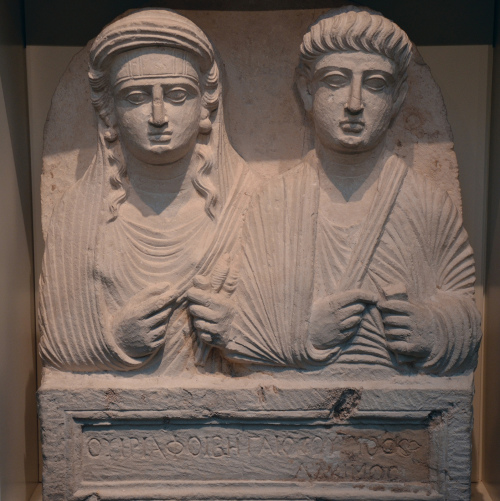Money, Money, Money – Production and value of Palmyrene portraits
Summary of lecture by Julia Steding, written by student Jesper V. Jensen.

Written by student Jesper V. Jensen.
In a very interesting lecture, Julia Steding, PhD student at Aarhus University, presented the preliminary results of her PhD thesis on the production economy of Palmyrene portraiture. This is a subject that has not received much attention by scholars in the past, but because most of the portraits from the city are now documented in the Palmyra Portrait Project’s database, it is possible to conduct a thorough analysis of the material. The main research questions of the thesis revolve around the process of making the portraits, the tools and production techniques, the workshops and the location of the portraits in the tombs. The main focus of material has so far been on female loculus reliefs.
The portraits are made from local limestone, which comes from several small quarries close to the city. The future portraits would here be hewn from the rock and reduced in size as much as possible, so as to reduce the amount of waste material produced in the workshops. The tools used to carve the portraits were flat chisels, tooth chisels and rasp chisels, and they were used throughout the entire period in which Palmyrene portraits were produced. Today, tool traces can sometimes be seen on the portraits, such as flat chisel marks on the portrait itself and tooth chisel marks on the plaque.
So far, the dating of the reliefs has been done on the basis of the iconography, but through analyses of the techniques of production, it is possible to identify subgroups within the established chronology. This is done by looking at elements like the level of decoration on the turban headbands, the amount of jewellery, drill holes, the relation between the vail and neck as well as whether the arms are undercut or not. These attributes seem to reveal a level of personal choice on behalf of the individual who commissioned the portrait, even though the loculus reliefs were carved after a certain standard formula. This aspect of personal touch must have influenced the price of the portraits in relation to the amount of work hours as well as the amount of details which had to be cut in the stone.
Even though Steding has only been working with the material for a short period of time, it is clear that this research will lead to some very interesting results.
